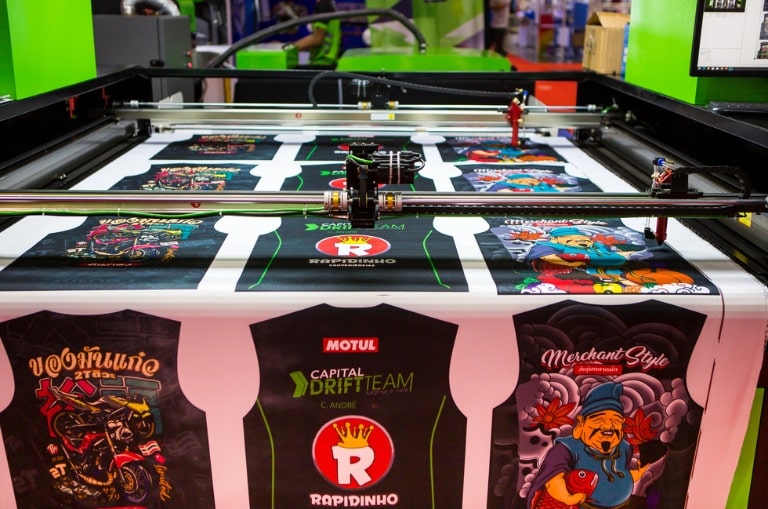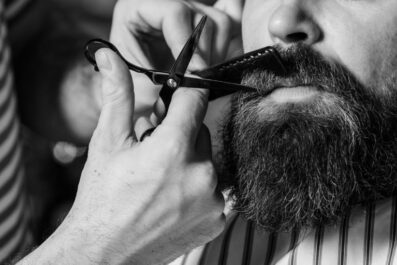The Ultimate Beginner’s Guide to DTF Printing for Custom Tees

Creating your own custom t-shirts has never been easier—or more exciting. Over the last few years, new printing technologies have changed the way we think about DIY apparel, and DTF printing (Direct-to-Film) has quickly become one of the most talked-about methods.
Whether you’re a parent making shirts for a school event, a crafter exploring new projects, or a small business owner building a brand, DTF printing can help you bring your ideas to life with vibrant designs and long-lasting results.
But what exactly is DTF printing? And how can beginners get started without feeling overwhelmed? This guide will walk you through everything you need to know, from the basics of the process to practical tips that will help your first projects turn out beautifully.
What Is DTF Printing?
DTF stands for Direct-to-Film printing, a process where you print your design directly onto a special transfer film. Once printed, the film is coated with adhesive powder, cured, and then heat-pressed onto your chosen fabric.
Unlike some other methods, DTF isn’t limited to just one type of material. It works on cotton, polyester, blends, light fabrics, and dark fabrics. This flexibility makes it an appealing choice for anyone who wants professional-looking results without investing in multiple machines.
Compared to screen printing or sublimation, DTF has a shorter learning curve and doesn’t require as much space. That makes it especially appealing for beginners.
Why Choose DTF Printing for Custom Tees?
The advantages of DTF printing are hard to ignore:
- Versatility: Works on a wide variety of fabrics.
- Durability: Designs last through dozens of washes without peeling or cracking.
- Vibrant Colors: Prints stay bright and sharp, even on dark shirts.
- Low Volume Friendly: Perfect for small batches or one-off designs.
For crafters and small businesses, this means you can experiment without large upfront costs. You don’t have to order 100 shirts just to make the process worthwhile—you can start with just a few and still get professional quality.
And if you’re wondering about the equipment, many people begin with compact machines. A popular option is the Epson Surecolor G6070 printer, which is often adapted for DTF printing and known for its reliable performance and vibrant color output.
What You’ll Need to Get Started
The setup for DTF printing isn’t as intimidating as it sounds. Here’s what you’ll need:
- DTF printer or converted inkjet printer
- DTF films (special sheets designed for transfers)
- DTF inks (usually pigment-based for bright, lasting results)
- Adhesive powder (helps bond the ink to fabric)
- Heat press (a must for transferring designs)
- Design software (from free tools like Canva to professional programs like Photoshop)
If you’re serious about scaling up, you can also invest in a curing oven or larger heat press. But many beginners start with the basics and still achieve excellent results.
Step-by-Step Guide to DTF Printing at Home
Ready to give it a try? Here’s a simple walk-through:
- Design your artwork. Use a program you’re comfortable with and set your file at a high resolution for best results.
- Print onto transfer film. Load the film into your printer and use the correct ink settings.
- Apply adhesive powder. Sprinkle powder evenly over the wet ink and shake off the excess.
- Cure the film. Use a small curing oven or even a heat press set to hover mode. The goal is to melt the powder until it becomes clear.
- Heat press your design. Place the cured film on your shirt, press it with the correct temperature and pressure, and let it cool.
- Peel and finish. Remove the film carefully, and your design will be fully transferred.
The process might take a couple of tries to perfect, but once you get the hang of it, it’s surprisingly fast.
Common Mistakes and How to Avoid Them
Like any craft, DTF printing comes with a few learning curves. Beginners often run into issues, but most are easy to fix:
- Uneven powder application: Always spread the powder smoothly to avoid blotches.
- Wrong heat settings: Check your press temperature and time—too hot or too cold can ruin the transfer.
- Low-resolution images: Blurry prints start with blurry files, so use crisp designs.
- Rushing the curing process: If the powder isn’t melted properly, the design won’t stick.
Take your time, especially on your first few shirts, and you’ll avoid most of these pitfalls.
Caring for DTF Printed Tees
One of the best things about DTF is its durability. Still, proper care ensures your shirts look great for years:
- Wash inside out on a gentle cycle with cold water.
- Avoid bleach or strong detergents.
- Hang dry when possible, or use low heat in the dryer.
- Iron inside out if needed, but avoid direct heat on the print.
With the right care, your shirts can hold their vibrancy even after dozens of washes.
Cost Breakdown: Is DTF Printing Worth It?
For beginners, the upfront costs are relatively low compared to traditional screen printing setups. A converted printer, heat press, and starter supplies can often cost under $1,000.
When you consider that one custom tee can sell for $20–$30 or more, the math starts to make sense quickly. Even if you’re only making shirts for your family or special events, the savings add up. For small businesses, DTF can be a profitable option without requiring bulk orders.
Creative Ideas for DTF Custom Tees
So what can you make with DTF printing? The options are nearly endless:
- Family reunions with matching shirts.
- Sports teams with names and numbers.
- Holiday tees for Christmas, Halloween, or the Fourth of July.
- Business merch for local shops, clubs, or non-profits.
- Personal gifts like birthday shirts or bachelorette party designs.
Once you realize how easy it is to customize a shirt, you’ll find plenty of occasions to use it.
Conclusion
DTF printing is more than just a trend—it’s a practical, beginner-friendly way to create custom apparel. With simple tools, a little practice, and creativity, you can design shirts that look professional and hold up over time.
Whether you’re starting a side business or just want to make personalized gifts, this method gives you the freedom to experiment without big risks. So gather your supplies, fire up your printer, and take the first step into the colorful world of DTF printing for custom tees.




